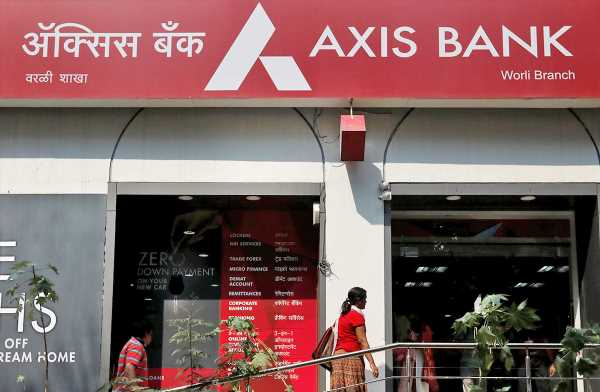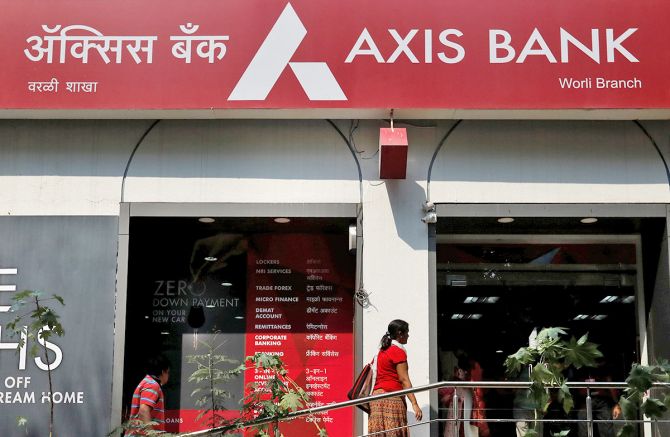Axis Bank in competition for best bank
Axis Bank has strengthened its positioning — on both the assets and liability side — and it may be set to deliver sustained improvement in performance. The valuation gap between Axis Bank (which trades at 1.4x core book value (or BV) and peers like ICICI Bank (valued at 2x BV) is expected to narrow.
Devangshu Datta reports.
Axis has started gaining market share on current account savings account or CASA (where its growth rate of 14 per cent comfortably beats aggregate industry growth rate of 10 per cent).
The CASA ratio is at 44 per cent (up 100 basis points (bps) quarter-on-quarter or QoQ).
It is leveraging the digital ecosystem, focusing on acquisition of corporate salary accounts, and also cross-selling products to existing clients.
The acquisition of Citibank India’s retail business should drive up CASA by 200 bps.
Management says Citi acquisition is on track and should be completed by the end of the 2022-23 financial year (FY23) or early FY24.
The NIM (net interest margin) is up to 3.96 per cent (+36 bps QoQ).
This is still lower against peers like ICICI Bank but the gap is narrowing, from 64 bps in the first half (H1) of FY22 to 36 bps in H1 FY23.
Loan growth, credit cost, and ROE (return on equity) are all, more or less, at the same levels as frontline private banks.
The share of retail loans has increased from 45 per cent in FY2017 to 55 per cent in H1FY23.
The key focus segments are retail, SME, and mid-corporate loans, and these are growing at a healthy pace.
In Q2FY23, retail, SME and wholesale sectors saw growths of 19 per cent, 28 per cent and 7 per cent QoQ, respectively.
The management remains confident of sustaining momentum, given festival season demand.
Deposit growth was lower at 10 per cent YoY (year-on-year), and 1 per cent QoQ.
All this means that the valuation should improve.
If the price to book value (P/BV) ratio increases to around 2x, the price would rise to around Rs 1,140.
However, the share has seen quite a bit of selling, so the current trend is down, with price at around Rs 930.
Given a favourable environment, the focus on growth should be fruitful.
On the liability front, the improving market share on CASA is a key positive but deposit growth rate needs to improve.
Asset quality challenges, on the retail and wholesale front, seem to have been met with declining gross slippages.
There’s been strong improvement in underwritings and reduction in impaired loans.
There’s also been improvement in the ratio of risk weighted assets to advances.
The bank also carries a buffer of non-NPA (non-performing assets) provisions to cushion itself from any potential shocks.
Asset quality for gross non-performing loans (NPL), net NPL, restructuring is at 2.7 per cent, 0.55 per cent and 0.4 per cent, with improvements in every category.
Slippages are at Rs 3,400 crore (2 per cent of loans, annualised) which led to lower credit costs of 44 bps (annualised).
Analysts expect further improvement in NIM over the medium term, to be driven by loan growth, focussed on the higher yield unsecured segment.
Currently, unsecured loans stand at 9 per cent of the total book (ICICI Bank is at 12 per cent).
Across the banking sector, there’s an increased cost of deposits as frontline banks have started to raise rates of retail deposits across maturities.
This will impact margins and the Axis Bank gap with peers should reduce further.
One key risk is an economic slowdown due to which loan growth slows and there’s higher-than-anticipated credit cost and lower-than-expected margin expansion.
Source: Read Full Article


